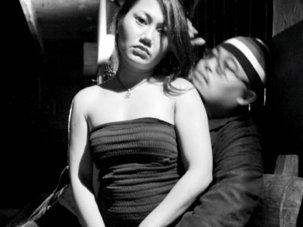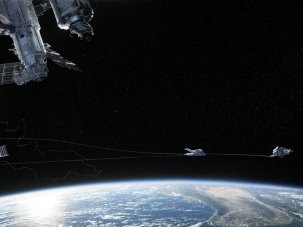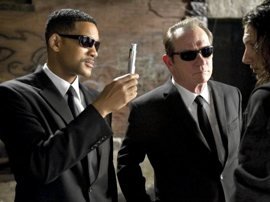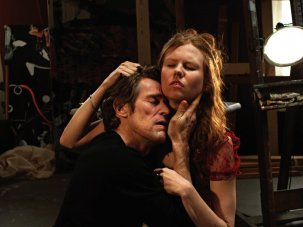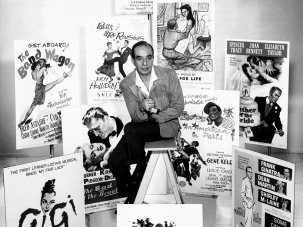Web exclusive
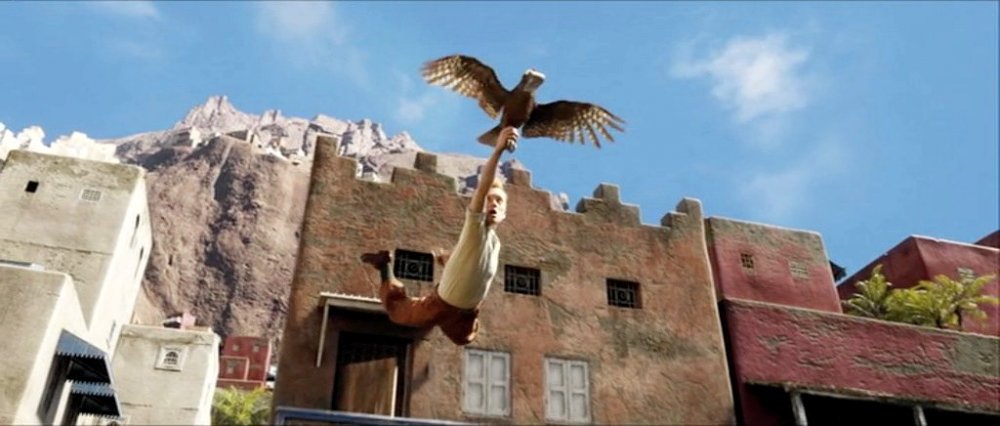
The Adventures of Tintin The Secret of the Unicorn (2011)
Although The Adventures of Tintin The Secret of the Unicorn (2011) is one of Steven Spielberg’s least interesting works, it contains a long take, lasting two minutes 33 seconds, that is fascinating for all kinds of reasons, both positive and negative.
It can be found 81 minutes into the film, as Tintin attempts to recover some scrolls that have been stolen by Sakharine’s falcon, and involves Tintin, his dog Snowy and Captain Haddock pursuing Sakharine through the streets of Bagghar. The interaction of foreground and background action, as well as onscreen and offscreen space, is genuinely impressive; while keeping the mechanics of the chase to the foreground, Spielberg creates a series of visual gags involving water from a dam (in which Haddock had accidentally shot a hole) flooding the streets, ending the water shortage established earlier.
Cinephiles tend to privilege long takes, yet Spielberg’s Tintin adaptation was greeted contemptuously, even by the director’s admirers. The reasons for this are not difficult to guess. Although Tintin makes use of mise en scène practices which are familiar from other Spielberg films, notably the Indiana Jones cycle, and thus, at one remove, from those of classical auteurs such as John Ford, Raoul Walsh and Michael Curtiz, its determinants are completely different. Technically, the shot I have been describing is not even a long take, or indeed any kind of take. It is a piece of animation which reproduces the characteristics of a long take:
Half of the two-and-a-half-minute-long single shot from The Adventures of Tintin The Secret of the Unicorn (Steven Spielberg, 2011)
But Tintin is in no sense a special case. Rather it takes to an extreme certain tendencies that now dominate mainstream filmmaking.
The fetishisation of sequence shots results from two linked assumptions: that such shots provide antidotes to the fast-cutting associated with post-70s Hollywood, and that they redeem cinema’s illusory nature by bringing it into closer contact with ‘reality’. The opening shots of Orson Welles’ Touch of Evil (1958) and Alfred E. Green’s Union Depot (1932; a film recently brought to my attention by Jonathan Rosenbaum) have a monumental quality because we are intensely aware of the effort that went into filming them, aware that what we are seeing involved real actors moving through real spaces in real time:
None of these factors could possibly be relevant to an animated feature such as Tintin, but they are equally irrelevant to Aleksandr Sokurov’s Russian Ark (2002), in which actors and time are real, but space isn’t. I found myself distinctly unimpressed by the ‘bravura’ opening shots of Alfonso Cuaron’s Gravity (2013) and Kenneth Branagh’s The Magic Flute (2006), since I knew perfectly well that they were only playing without cuts thanks to CGI. It is, of course, still possible for long takes to be created by traditional means – the fourth episode of Cary Joji Fukunaga’s series True Detective (2014) contains a six-minute sequence shot that appears to have been achieved without overt digital manipulation (though we really only have the filmmakers’ word for this) – but the assumption will usually be that they weren’t. The production conditions which once gave them their impact no longer exist.
The opening shot of Union Depot (Alfred E. Green, 1931)
The Tintin shot, which positively revels in its status as a digital creation, is the logical product of all this. It is amusing precisely because we know it would have been impossible to stage before a camera. But even in those films which attempt to cover up their digital footprints, there is the expectation that we will no longer believe we are seeing something which is, or could be, ‘real’. What we have now is a form of postmodern aesthetics in which the unreliability of the image matches the unreliability of every other element making up the cinematic text. We cannot be certain whether characters, emotions or narrative structures are intended to be taken ‘straight’, or if they are being subtly mocked, manipulated by clued-in filmmakers who would like us (or at least those of us who are ‘hip’ enough) to share their attitude of complacent superiority towards every aspect of the real.
Irony, it would seem, now reigns supreme. But the real irony here is that although the long take was once associated with a concept of ‘pure’ cinema, it actually returns cinema to its theatrical roots.
Consider the scene in Vincente Minnelli’s Lust for Life (1956) which shows Vincent Van Gogh (Kirk Douglas) talking to Paul Gauguin (Anthony Quinn) shortly after the latter’s arrival in Arles. Their conversation is shot as a single take lasting almost four minutes, in the middle of which Vincent mistakenly addresses Paul as Theo (“But Theo… I mean Paul”). Theo Van Gogh was Vincent’s brother, and this Freudian slip may relate to the protagonist’s repressed homosexuality, a recurring theme in Minnelli’s work: at a point when his homoerotic friendship has become particularly intense, Vincent redefines it by seeing Paul as more brother than lover.
But whose ‘mistake’ is this? Is it the character’s or the actor’s? Was it scripted or improvised? Its location in the middle of an otherwise flawless sequence shot suggests this ‘slip’ may have been a genuine one on the part of Douglas, the length of the take encouraging us to perceive Douglas’ error much as we might perceive an error made during a live stage performance:
Half of the three-and-a-half-minute-long single shot from Lust for Life (Vincente Minnelli, 1956)
All fiction-making raises questions about the nature of reality and identity, but the questions we are encouraged to ask while watching Lust for Life also involve intention and agency: who (actor, screenwriter, director) was responsible for this? What was their motivation? How conscious was their decision? What does it tell us about them? Thanks to Minnelli’s long-take technique, we view mediated events much as we would unmediated ones, applying standards of interpretation which resemble those we might use to interrogate the actions of our friends and acquaintances.
Where Minnelli’s sequence shots throw us back into the social world, those of the digital era insulate us from it. If we can no longer accept that mistakes or intentions might be genuine, our only remaining option is to view everything as false. The digitally manipulated long take might well be postmodern cinema’s defining gesture.





